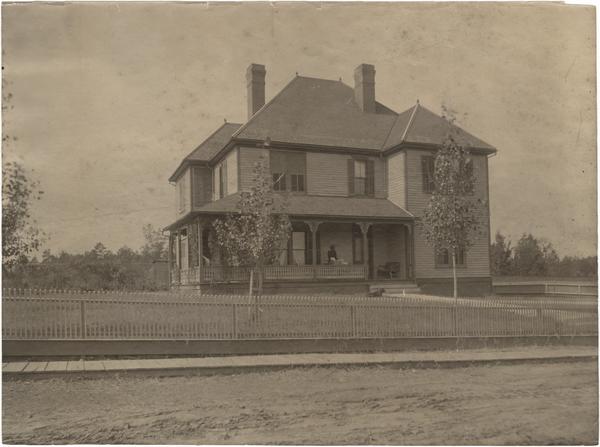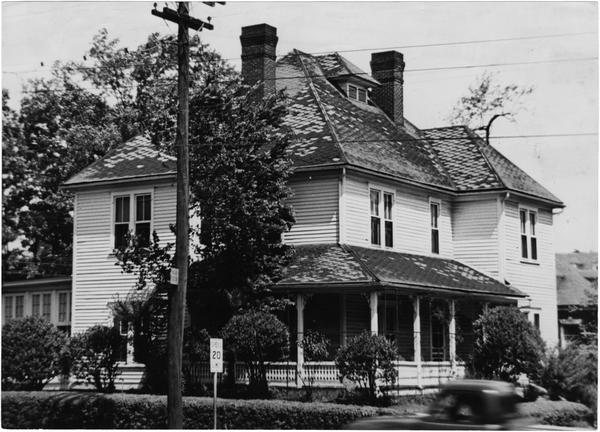In 1952, just sixty years after it was built, the McIver house was torn down to make room for new construction on campus. Located on the corner of Spring Garden Street and College Avenue, the house held a central location on campus for more than half a century.
Much of what we know about the McIver residence was recorded in several articles published by Woman’s College graduate Virginia Terrell Lathrop (class of 1923) in the Carolinian, Greensboro Daily News, and Alumnae News. Recently, SCUA archivists rediscovered her articles which contain interesting stories about the house and it’s inhabitants. Here are some highlights from her account.
In 1891, while the first buildings (Administration and Brick Dormitory) were erected on the site of what would soon by State Normal and Industrial School, Dr. McIver and his family lived in Benbow hotel in downtown Greensboro. The NC legislature had not planned for a home for the McIvers, but in 1892 the Board of Directors approved money for an addition to the dormitory to house twenty-two more students and the construction of the President’s home. It was built using left-over materials from the construction of the Administrative Building and the Brick Dorm. The building was completed in just six weeks.
At the time the college was built, it was at the outskirts of Greensboro and had no nearby housing for faculty. The McIver family let some of them board in their home, which raised some question as to whether it was appropriate for the McIver’s to let others stay in a home that wasn’t theirs. However, Lathrop uncovered reports to the Board of Directors that showed Dr. McIver paid $15 a month in rent, and one newspaper defended him, saying “so long as he paid his rent it was his own business whether he took boarders or not.”
Ms. Lathrop described the house as a “spacious two-story ten room frame house” that “stood just inside the main gate of the college.” It was a place where the McIver’s hospitality could extend far and wide. They took in anyone who needed a place to stay, from visiting dignitaries to “Valentine,” a tramp who jumped from a passing freight train on the on the February 14th. He came to the McIver house offering to cut wood for a meal and stayed for a year, leaving as mysteriously as he came.
Other more distinguished guests to the McIver home included, Walter Hines Page founder of the State Chronicle newspaper in Raleigh, who delivered a speak at the auditorium entitled “Forgotten Man,” and George Peabody, philanthropist and educator for whom Peabody Park is named. Ms. Lathrop speculated that Governor Aycock spent the night with the McIvers when he visited campus after the Brick Dormitory fire in 1904. He came to campus the day after the fire and was pleased to find the students “fully clothed and in their right minds.”
The President’s home served as a gathering place, but was first and foremost a home for Dr. McIver’s family. Two of the McIver children, Verlinda, who died in childhood, and Mrs. John Dickinson, where born in the house. Mrs. Dickinson was married in the house and a wedding reception for the McIver’s older daughter, Mrs. James Young, was held in the two living rooms.
After Dr. McIver’s death in 1906, the legislature offered the home to Mrs. McIver for her lifetime. Ms. Lathrop says that Mrs. McIver would offer a place every year to one or two students at the college to help defray the costs and make the college experience more affordable. She also claimed that, “over a long period of years [Mrs. McIver] gave a room and meals to a succession of students at the Negro A and T college, always keeping in touch with them after they finished college and when a number of them became teachers of their own race.” Following Mrs. McIver’s death in 1944, the house was used as a dormitory for service-women returning after WWI to attend college on the G.I. Bill.
The McIver house was demolished in October of 1952.

